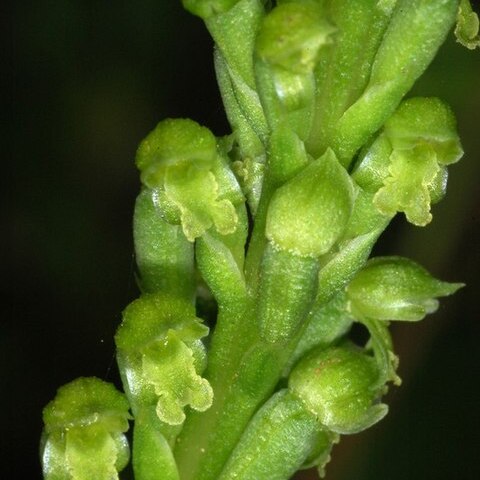(Description based on specimens from northern Tas.) Leaf 300–800 × 6–7 mm. Inflorescence 350–600 mm long, rigid, 10–60-flowered. Pedicels c. 1 mm long. Flowers densely crowded, 3–3.5 × 2–2.5 mm, pale green to yellowish green. Dorsal sepal obliquely erect, ovate, c. 2.5 × 2.5 mm, shallowly concave, tip pointed, often upturned. Lateral sepals recurved, ovate to ovate-lanceolate, c. 2.5 × 1 mm. Petals ovate, c. 2 × 0.8 mm, erect within dorsal sepal. Labellum rectangular, c. 2–2.5 × 1.3 mm, margins crinkly with numerous cell-clusters, apex truncate or with an apical mucro or shallow notch. Basal callus of 2 dark green, fused mounds; apical callus obscure, granular.

